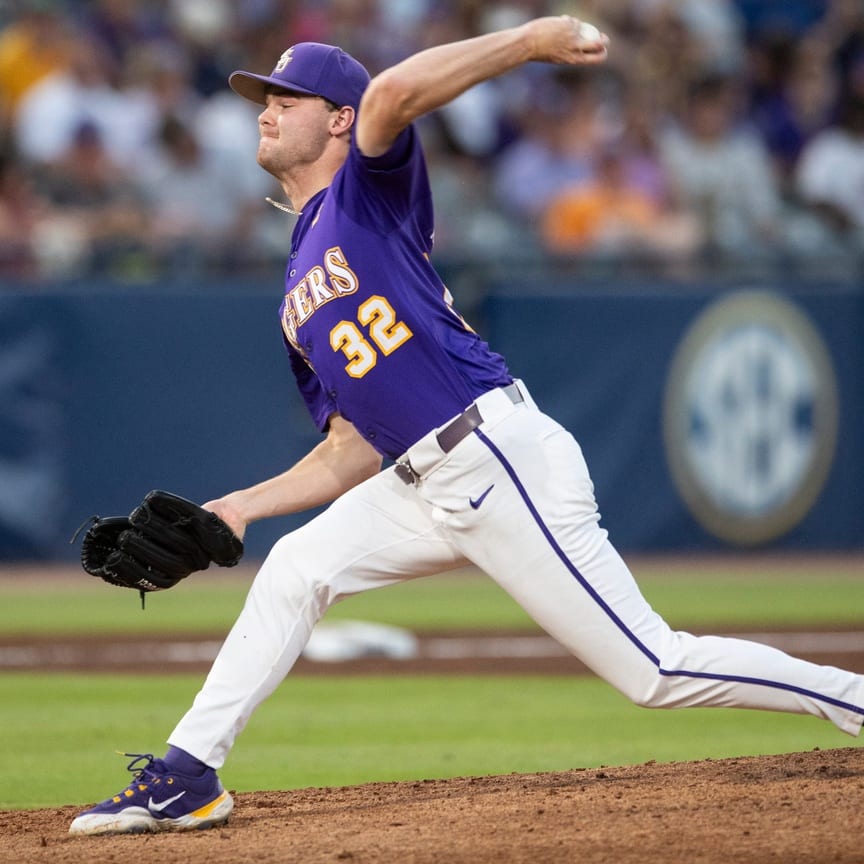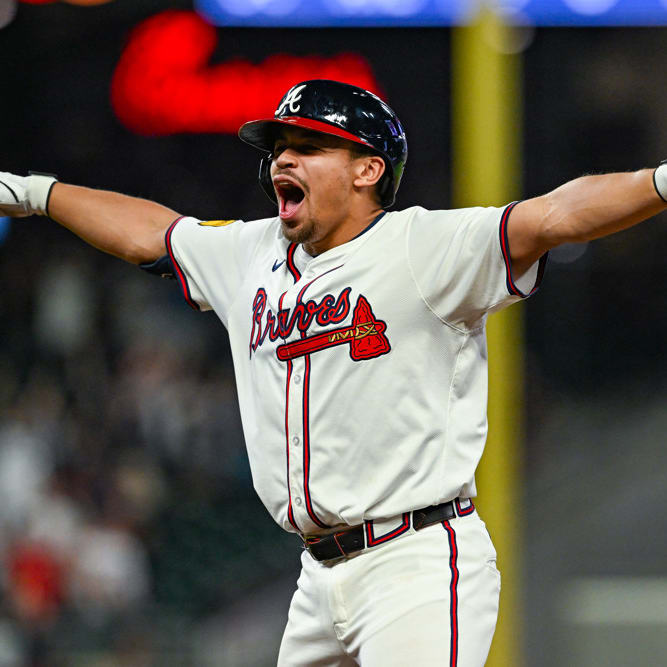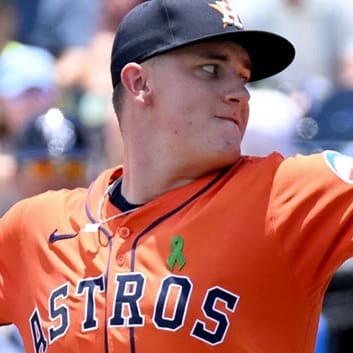In my last article, we looked at barrel rates to identify hitters to buy low and fade. Since then Christian Walker crushed four home runs. We also examined the league-wide hitter data from April to May.
This article will analyze three notable pitches with the highest and lowest swinging-strike rates. But first let's look at league-wide pitching data for home runs, BABIP and plate discipline to see if anything stands out.
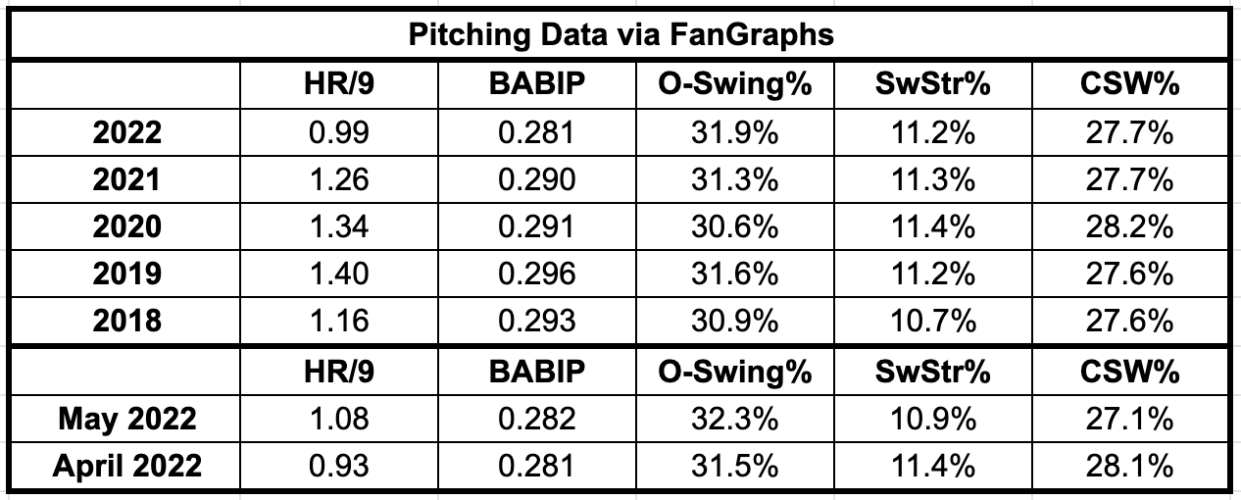
As the chart shows, HR/9 and BABIP are lower this season than previous seasons, but HR/9 was higher in May than April.
Highest Swinging-Strike Rates by Pitch
We'll examine three pitchers and their pitches to see how they compare to previous seasons and career norms in hopes of identifying starting pitchers worth a deeper dive. For perspective, the chart below shows the median swinging-strike rate by pitch since 2019, not including 2020.

Tyler Anderson, LAD - Changeup
After beginning the year in the bullpen, Tyler Anderson joined the starting rotation after Andrew Heaney hit the injured list. Anderson qualifies as a control-focused pitcher, evidenced by his career 20.6 percent strikeout rate and 6.9 percent walk rate.
In 35.2 innings, Anderson lowered his walk rate to a career-low 3.4 percent and increased his strikeout rate to 23.3 percent versus 2021 (19.1%). That led to an career-high 19.9 K-BB%. Most notably, Anderson's changeup had a 26.3 SwStr%, more than eight percent higher than his career average. Unsurprisingly, the chase rate on the changeup increased to 43.7 percent, up nearly
In my last article, we looked at barrel rates to identify hitters to buy low and fade. Since then Christian Walker crushed four home runs. We also examined the league-wide hitter data from April to May.
This article will analyze three notable pitches with the highest and lowest swinging-strike rates. But first let's look at league-wide pitching data for home runs, BABIP and plate discipline to see if anything stands out.

As the chart shows, HR/9 and BABIP are lower this season than previous seasons, but HR/9 was higher in May than April.
Highest Swinging-Strike Rates by Pitch
We'll examine three pitchers and their pitches to see how they compare to previous seasons and career norms in hopes of identifying starting pitchers worth a deeper dive. For perspective, the chart below shows the median swinging-strike rate by pitch since 2019, not including 2020.

Tyler Anderson, LAD - Changeup
After beginning the year in the bullpen, Tyler Anderson joined the starting rotation after Andrew Heaney hit the injured list. Anderson qualifies as a control-focused pitcher, evidenced by his career 20.6 percent strikeout rate and 6.9 percent walk rate.
In 35.2 innings, Anderson lowered his walk rate to a career-low 3.4 percent and increased his strikeout rate to 23.3 percent versus 2021 (19.1%). That led to an career-high 19.9 K-BB%. Most notably, Anderson's changeup had a 26.3 SwStr%, more than eight percent higher than his career average. Unsurprisingly, the chase rate on the changeup increased to 43.7 percent, up nearly nine percent from his career averages.
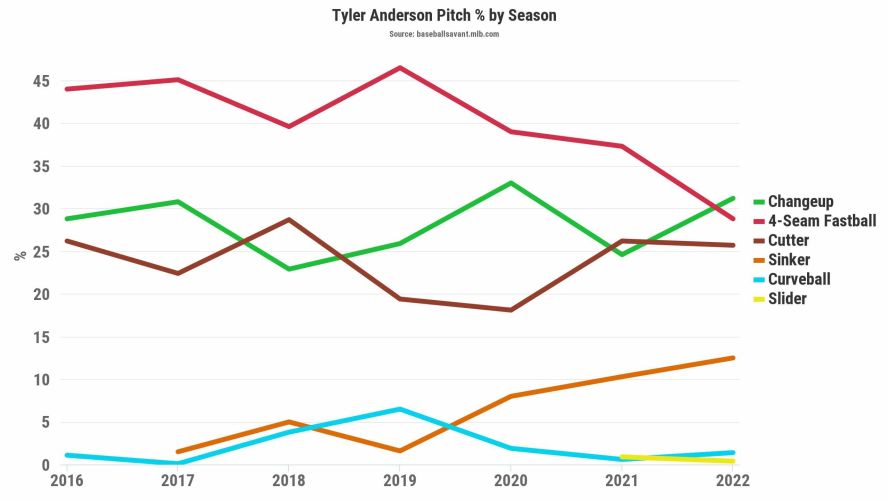
Anderson throws his changeup more than any pitch, increasing its use from 24.6 percent last season to 31.1 percent this season. As a weapon against righties, Anderson increased the use to 38.7 percent with a .133 AVG, .167 SLG and .132 wOBA allowed in 2022. That improved from the changeup results in 2021 with a .247 AVG, .475 SLG and .310 wOBA.
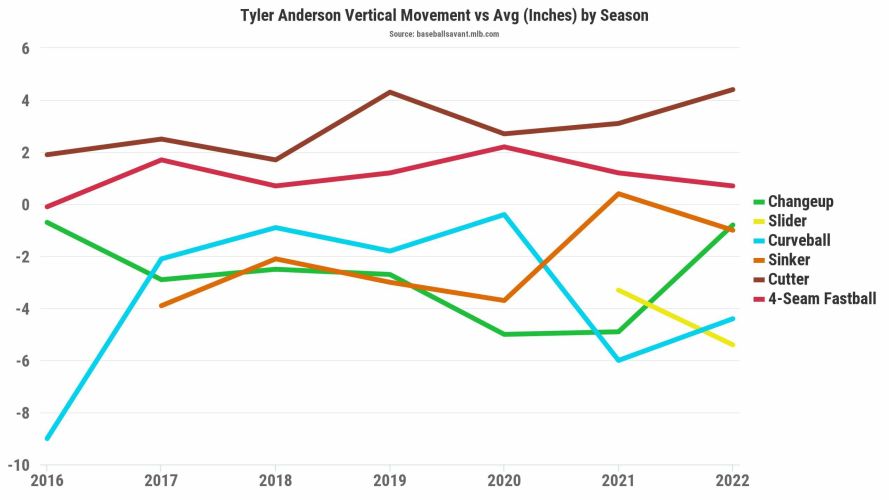
Although Anderson's changeup doesn't possess above-average vertical movement, it added four inches of drop versus 2021. The cutter remains effective with his next highest swinging-strike rate of 11 percent, with above-average vertical movement similar to 2021.

On Tuesday, in the second game of the doubleheader against the Diamondbacks, Anderson threw a seven-inning quality start with seven hits, two earned runs and zero walks allowed with seven strikeouts. Anderson's changeup remained filthy with a 44.0 Whiff% and 35.0 CSW%. It's positive to see Anderson bounce back after seven runs allowed against the Phillies on May 12.
Luis Garcia, HOU - Cutter
Another starting pitcher among the leaders in swinging-strike rate by pitch includes the Astros' Luis Garcia. Garcia's cutter boasts a 27.5 percent swinging-strike rate with silly results — .108 AVG, .270 SLG and .186 wOBA. After posting quality numbers in 2021, Garcia built upon the 26.4 percent strikeout rate and 7.9 percent walk rate in 155.1 innings. Through 33.2 innings in 2022, Garcia has a 27.8 percent strikeout rate and 6.8 percent walk rate to improve the K-BB%.
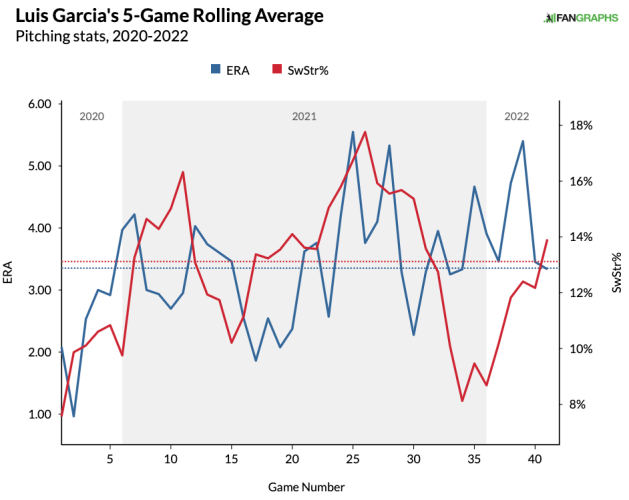
Garcia also has two other pitches with a double-digit swinging-strike rate — his curveball at 12.2 percent and his changeup at 17.9 percent. Garcia's cutter and changeup possess above-average horizontal movement, with the offspeed pitch having 17.1 inches of fade. Interestingly, Garcia's changeup increased to 85.8 mph, more than two mph more than in 2021. The same trend applied to the four-seamer, though only a one mph jump.
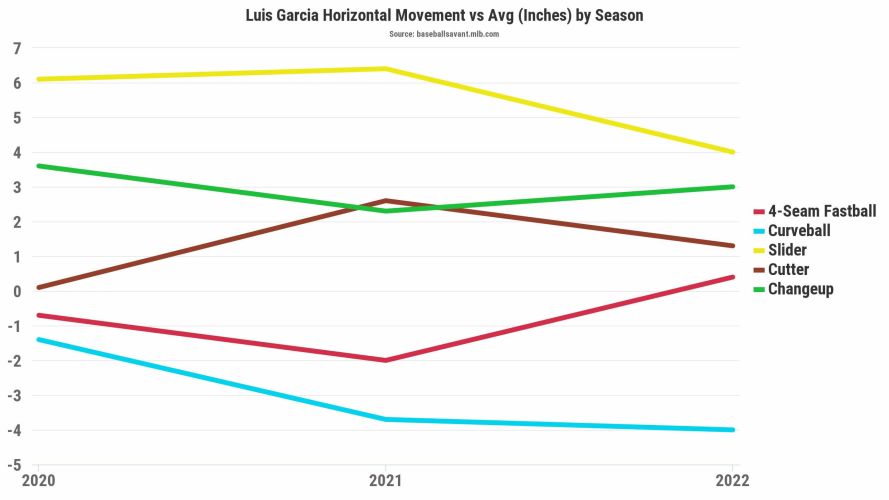
Although Garcia's cutter had fewer inches of break versus the average in 2021, it has similar vertical and horizontal movement profiles. Among starting pitchers with 100 pitches thrown, Garcia's cutter ranks fifth. It's also the only cutter with a swinging-strike rate higher than 20 percent. The next closest cut fastball involves Yusei Kikuchi's, with a 16.8 percent swinging-strike rate.
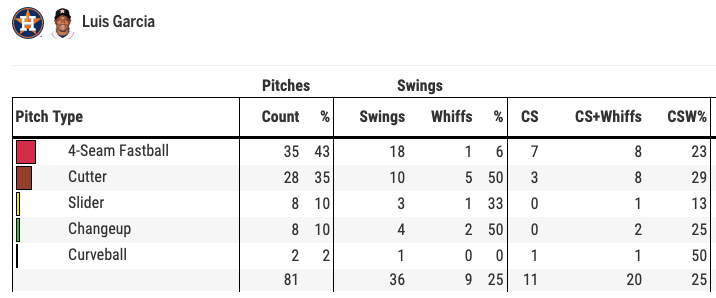
On Wednesday against the Red Sox, Nick Pivetta stole the show with a complete game, allowing two hits, one earned run, no walks and eight strikeouts. Garcia allowed five hits, five runs (three earned) and three walks with four strikeouts in four innings. Although the results aren't great, Garcia's cutter remained dominant with a 50.0 Whiff% and 29.0 CSW%.
Chad Kuhl, COL - Slider
If you dig one-pitch pitchers, then let's discuss Chad Kuhl. It raised eyebrows to see Kuhl's slider inside the top-15 pitches in swinging-strike rate. The slider elicits a career-high 22.7 percent swinging-strike rate, more than three percent higher than his career rate of 19.1 percent.
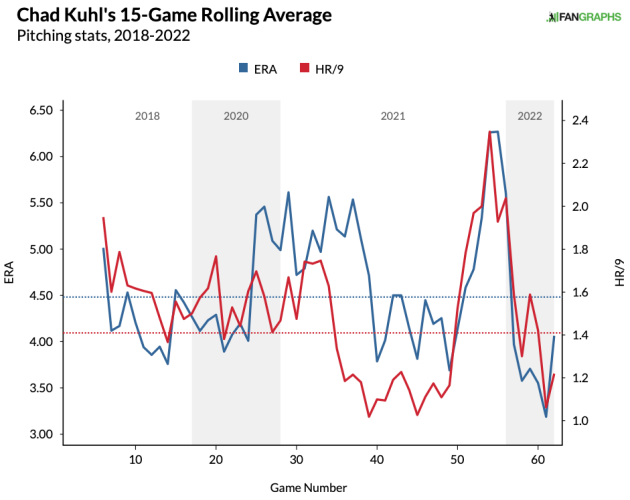
Oddly enough, Kuhl's ratios in 2022 look decent, with a 2.88 ERA and 1.02 WHIP through 34.1 innings. Kuhl's ERA and WHIP likely will regress given the .220 BABIP and 77.9 LOB% in 2022. That's lower than the career BABIP of .296 and LOB% of 72.8%. The 0.79 HR/9 also stood out with a 1.48 HR/9 in 2018, 1.55 HR/9 in 2020 and 1.46 HR/9 in 2021.
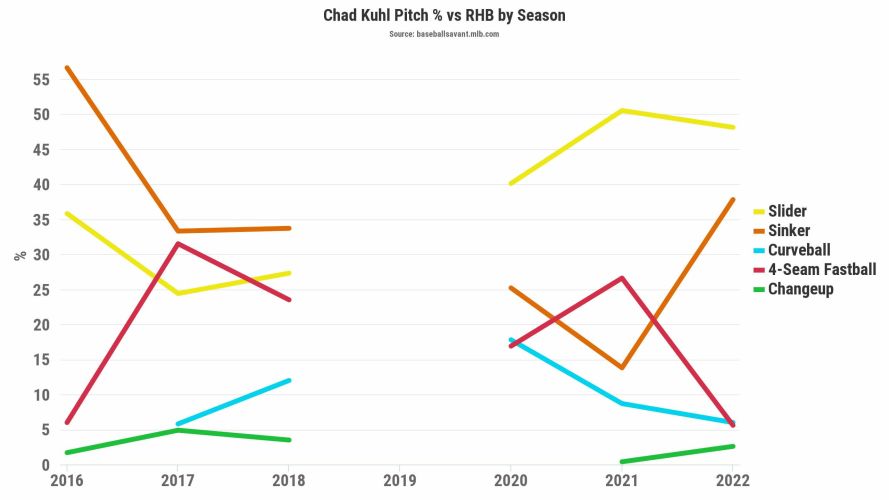
Kuhl typically relied on the slider thrown at 41.9 percent in 2022 and 46.1 percent in 2021, though nearly 50 percent of the time against right-handed hitters. The results via the slider align with the swinging-strike rate, evidenced by the .071 BA, .179 SLG and .128 wOBA. Unfortunately, Kuhl's next best pitch in swinging-strike rate includes the changeup (8.3 percent) and four-seamer (8.7 percent). However, Kuhl only throws them for a combined usage rate of 15 percent. Overall, Kuhl remains intriguing due to the early success.
Lowest Swinging-Strike Rates by Pitch
Although these players and pitchers aren't as exciting, they serve as fantasy-viable options in most formats.
Zack Greinke, KC - Curveball
Zack Greinke's 3.52 ERA and 1.17 WHIP align with the career norms, but the 8.9 percent strikeout rate and 1.9 percent walk rate stop us in our tracks.
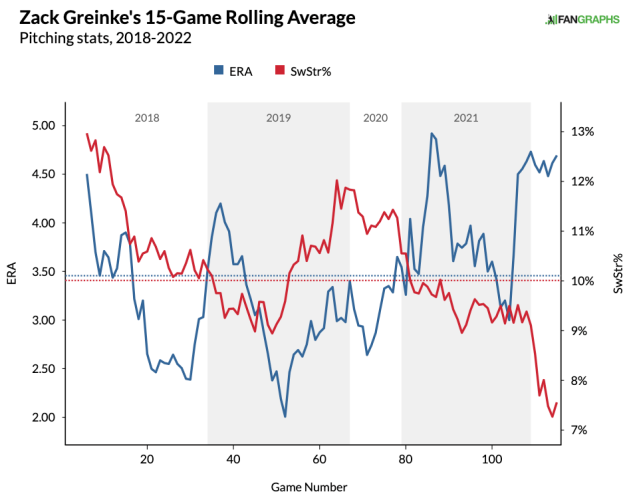
The near-elite walk rate isn't outlandish, but the strikeout rate at less than 10 percent is unappealing. Greinke boasts a career 22 percent strikeout rate with a 17.2 percent strikeout rate in 2021. Amongst non-fastballs, Greinke's curveball has a career-low 3.1 percent swinging-strike rate. We have to go back to 2014 and 2016 when Greinke's curveball finished with a swinging-strike rate below nine percent. Although Greinke is older, his curveball has a career swinging-strike rate of 10.5 percent.
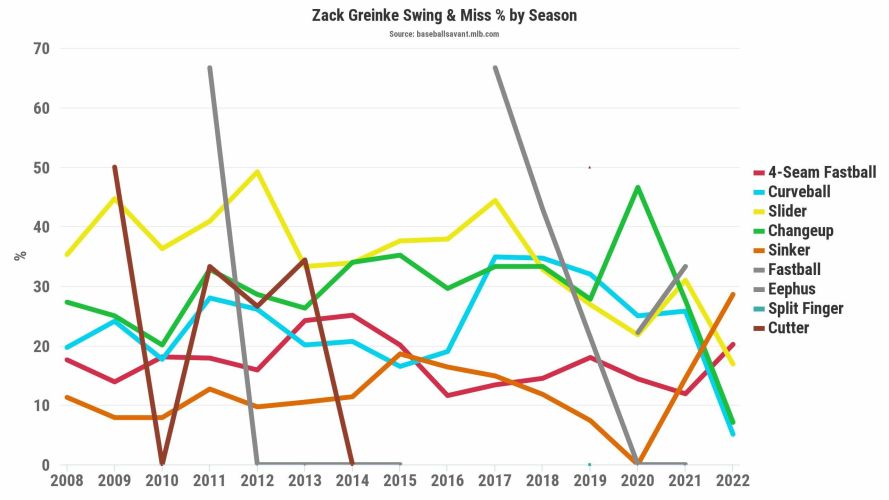
The numbers flipped upside down, with the four-seamer eliciting the highest swinging-strike rate at 8.7 percent. Greinke qualifies as one of the sharper pitchers in the game with an underwhelming yet effective arsenal. Although Greinke's curveball doesn't stand out movement-wise, it drops nearly 67 inches at 70.9 mph.
In 2022, Greinke peaked at four strikeouts that occurred in two starts. Meanwhile, in 2021, Greinke finished with fewer than four strikeouts in 21 of 29 games (72.4 percent). Greinke still holds deep-league value with the quality ratios, though fantasy managers will need to find strikeouts elsewhere.
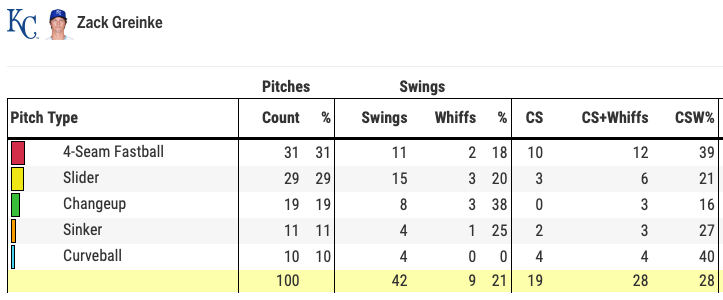
Greinke tied a season-high with four strikeouts against the White Sox but allowed seven hits, two earned runs and one walk with 12 hard-hit batted balls. Yikes. He hardly used the curveball on Wednesday, but the changeup elicited the most whiffs. It's unlikely Greinke's swinging-strike rates increase.
Zach Plesac, CLE - Changeup
Zach Plesac's slider remains filthy with a 17.6 percent swinging-strike rate in 2022 versus a career rate of 18.8 percent. However, Plesac's changeup landed toward the bottom of the pitch data in swinging-strike rate. Plesac's changeup has a career 12.7 percent swinging-strike rate versus 8.5 percent this season. It peaked at 16.8 percent in 2020 during his career-best season.
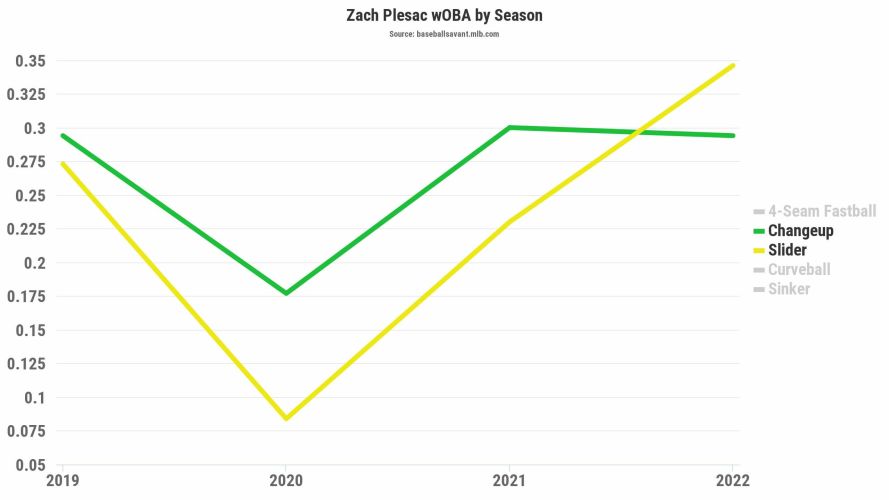
Outside of swinging-strike rate, the results trended downward for Plesac's changeup. In the peak 2020 season, Plesac's changeup allowed a .069 BA, .103 SLG and .084 wOBA, which crept to a .242 BA, .408 SLG and .300 wOBA in 2021. Then, in 2022, the drop in swinging-strike rate for the changeup aligned with the .250 BA, .400 SLG and .294 wOBA.
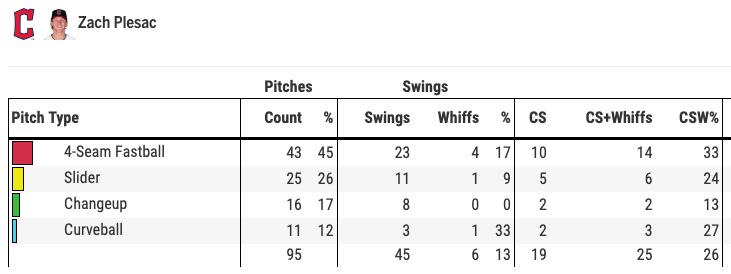
Plesac threw a quality start with six hits, two earned runs and two walks with three strikeouts against the Reds on Tuesday. He allowed nine hard-hit batted balls, and the slider and changeup combined for a single whiff between both pitches. Plesac's slider typically elicited a high whiff%, but the changeup remained hit or miss with a peak whiff% of 16.7 in the last five games. That might indicate the strikeouts might not return to the 2020 numbers.
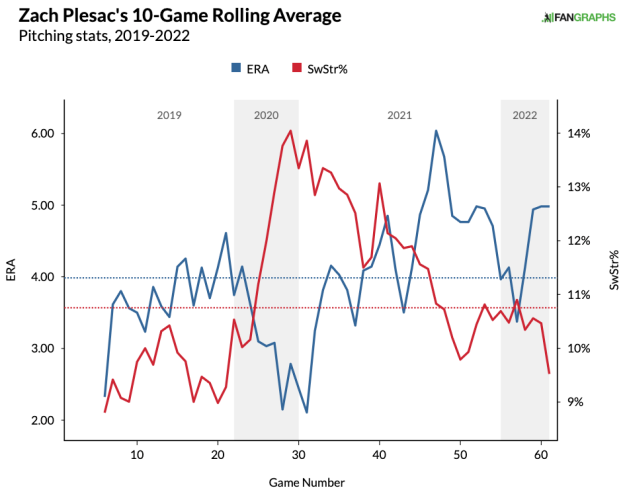
It's hard to replicate the elite 27.7 percent strikeout rate and 2.9 percent walk rate he had in 2020, so it's understandable to see the K-BB% and ratios regress. After an outlier .224 BABIP and 91.7 LOB%, all the surface metrics trended in the opposite direction. Although Plesac's slider remains filthy, it's hard to roster a starting pitcher with a 13.8 percent strikeout rate and a 7.2 percent walk rate in 38.2 innings.
Plesac's four-seamer is the only pitch with above-average movement profiles. Unless the changeup swinging-strike rate improves closer to the career norms, Plesac only has one effective pitch.
Taylor Hearn, TEX - Slider
It's early, but Taylor Hearn increased the strikeout rate to 22.5 percent, up from 20.9 percent in 2021. Hearn allowed a .275 BABIP and 70.8 LOB% in 2021, but the BABIP boomed to .345 with a similar LOB% at 75.6. Although the strikeout rate increased in the small 2022 sample, the overall swinging-strike rate of 8.5 percent aligns with the 9.2 percent in 2021.
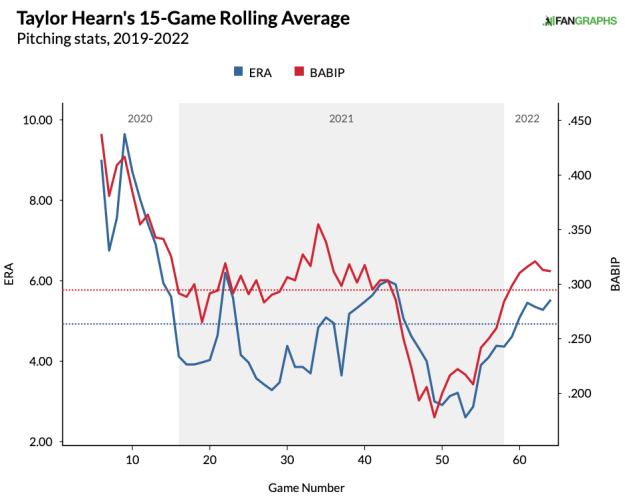
Hearn only throws one pitch with a double-digit swinging-strike rate in the changeup. He falls into this group with the slider that has an 8.6 percent swinging-strike rate versus a 13.3 percent rate in 2021. Hearn's 2022 numbers fall between the career swinging-strike rate of 11 percent on the slider.
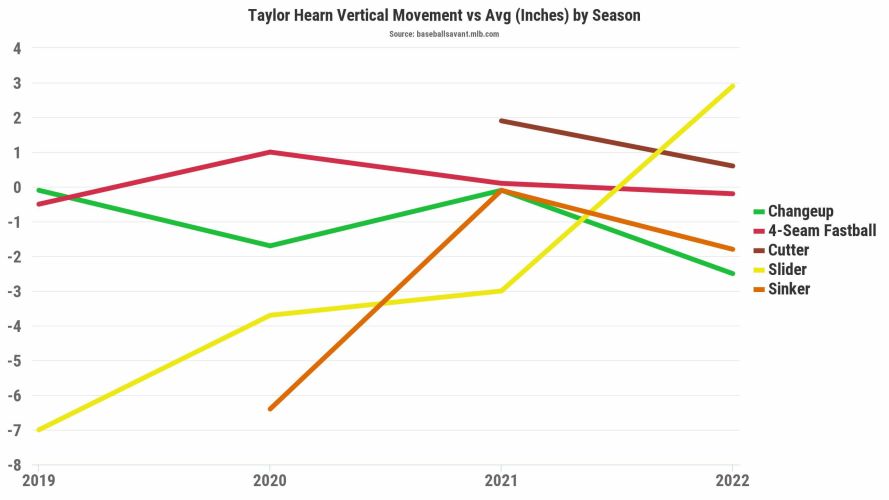
Interestingly, Hearn's slider added more than seven inches of drop and 2.9 inches more than the average. The added vertical movement should translate into more whiffs and a higher swinging-strike rate. It's breaking about an inch less with minor changes in spin rate (<80 RPM), meaning it's sweeping less and dropping more.
Meanwhile, Hearn's 17 percent swinging-strike rate on the changeup looks intriguing, but the 25.0 O-Swing% seems odd. The swinging-strike rate remains up due to the hitters not making contact with a 63.6 Contact% versus a career Contact% of 77.7. Hearn mainly uses the changeup (8.2 percent) to righties, but the early results don't pop with a .300 BA, .400 SLG and .342 wOBA.
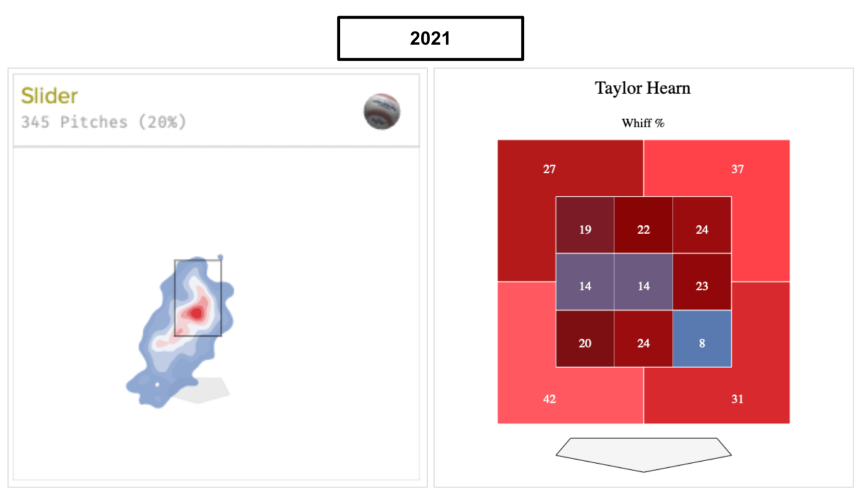
With the slider movement profile change, Hearn locates the breaking ball down and inside to right-handed hitters in 2022. Although we're dealing with a larger sample in 2021, Hearn located the slider more in the heart of the zone.
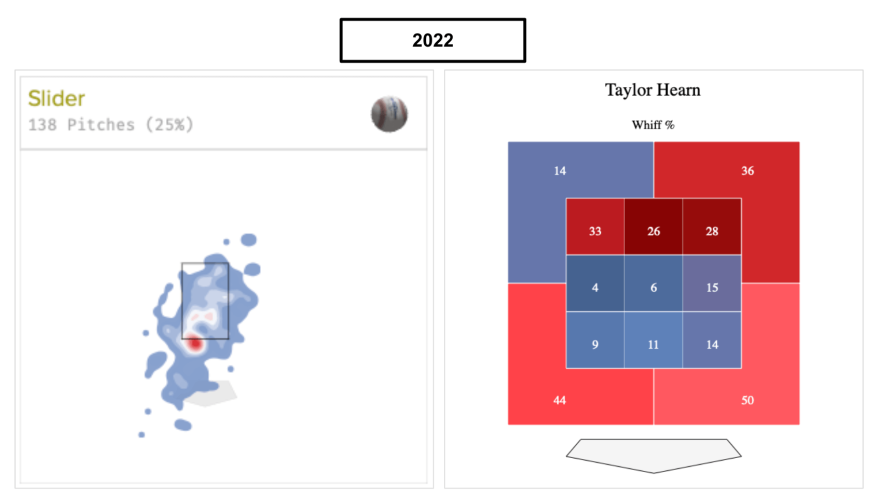
Maybe it's coincidence or related, but Hearn isn't generating as many whiffs in that lower and inside part of the plate for righties, where he also locates the slider. Among non-fastballs, Hearn's slider remains one of the worst pitches in swinging-strike rate. However, we should expect better results with the added vertical movement.








